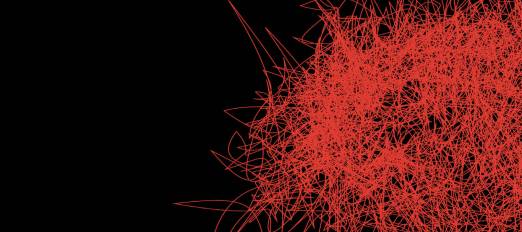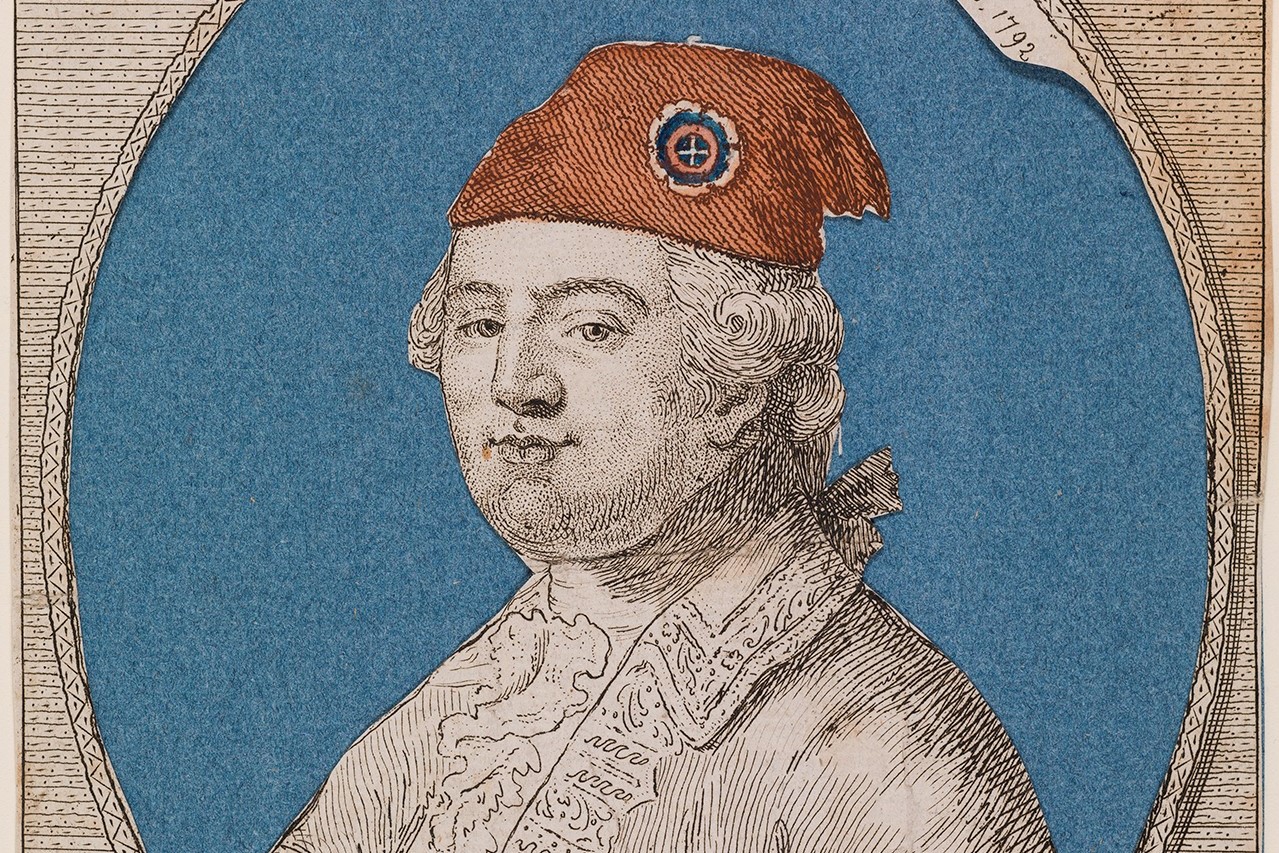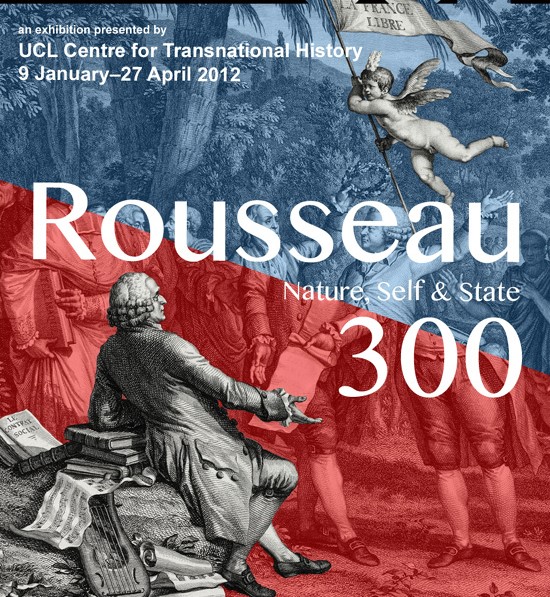14 January 2020 - 21 June 2021
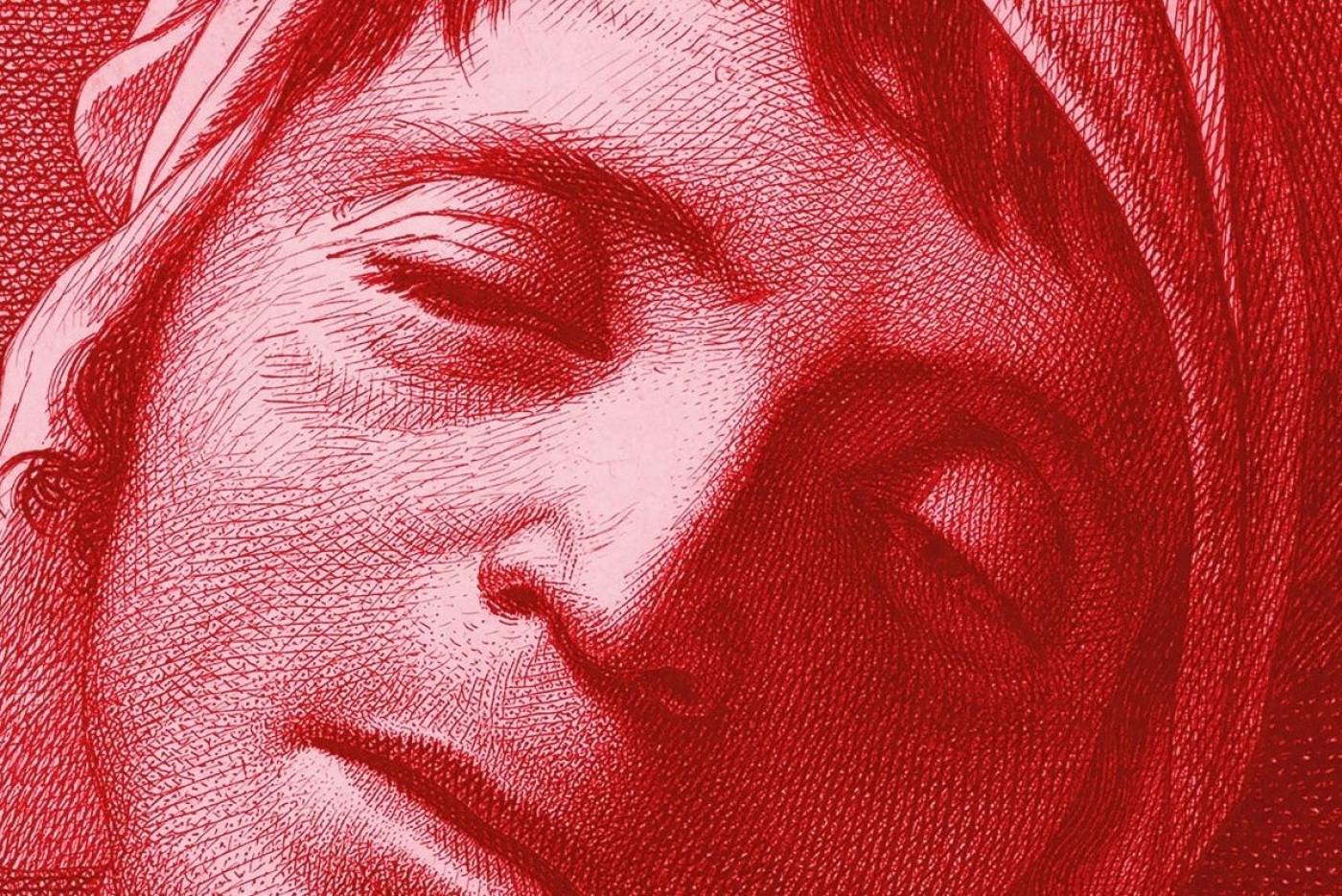
From the trial and execution of Louis XVI to the fall of Robespierre
Image based on Jean-Paul Marat by Jacques-Louis Copia (after Jacques-Louis David) (detail), 1794, LDUCS-10556. Design Angela Scott ©UCL Art Museum
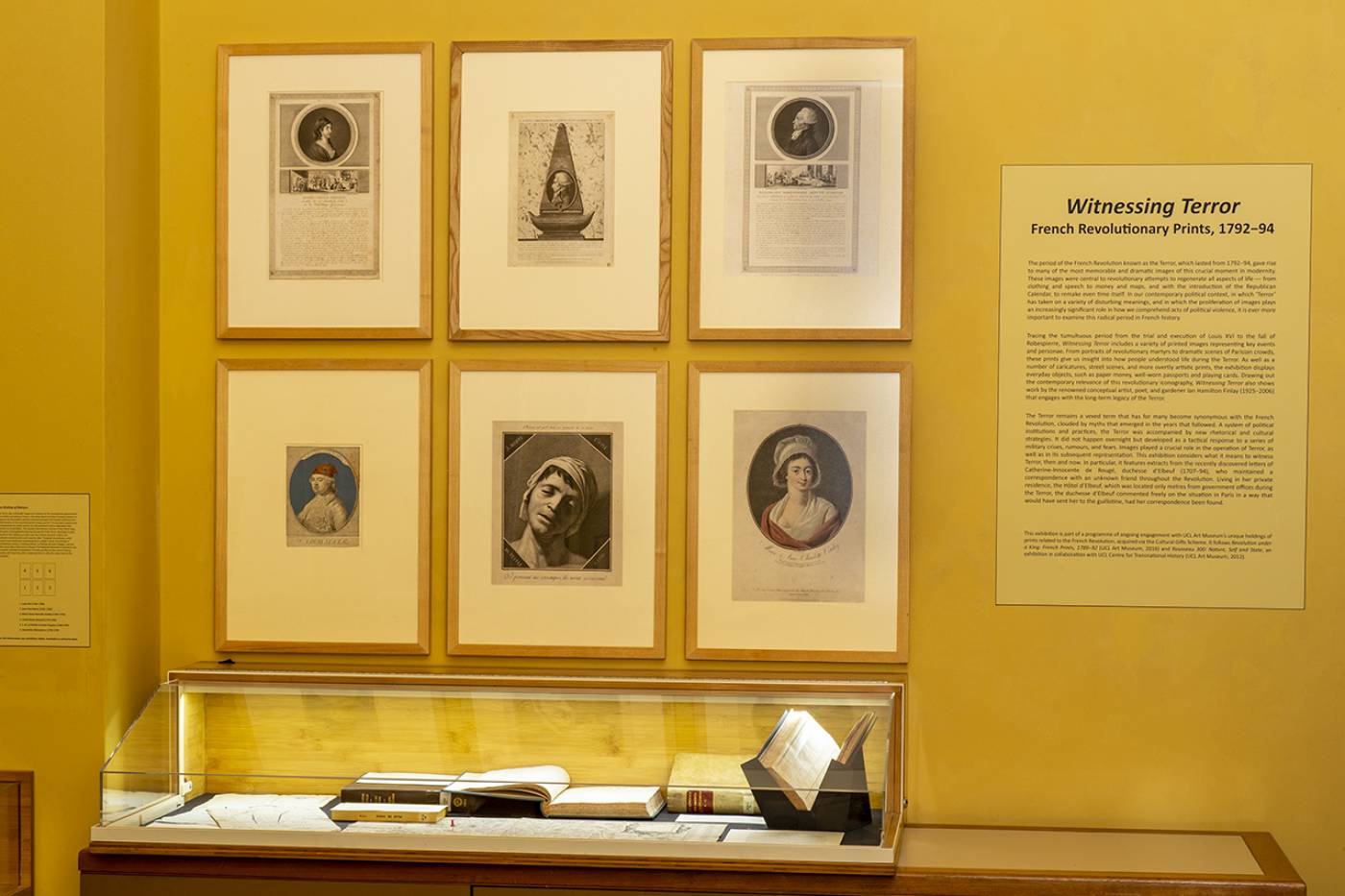
The Making of Martyrs
Photo © Mary Hinkley
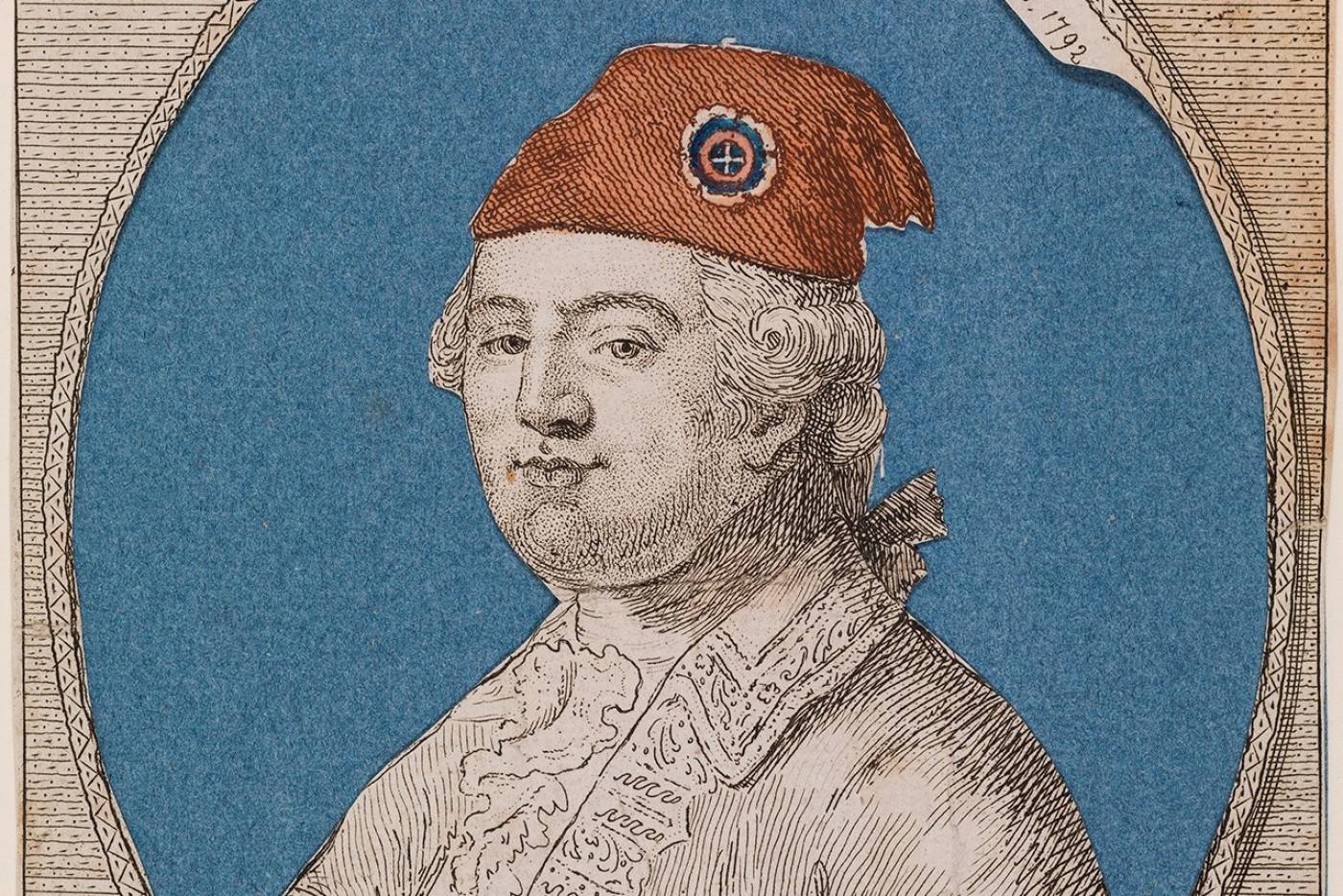
A group of revolutionaries stormed the Tuileries Palace, confronted Louis XVI and forced him to wear a revolutionary bonnet
Louis XVI by Noel Lemire (1724 – 1801) After Jean Michel Moreau (1741 – 1814), , 1792, LDUCS-10058
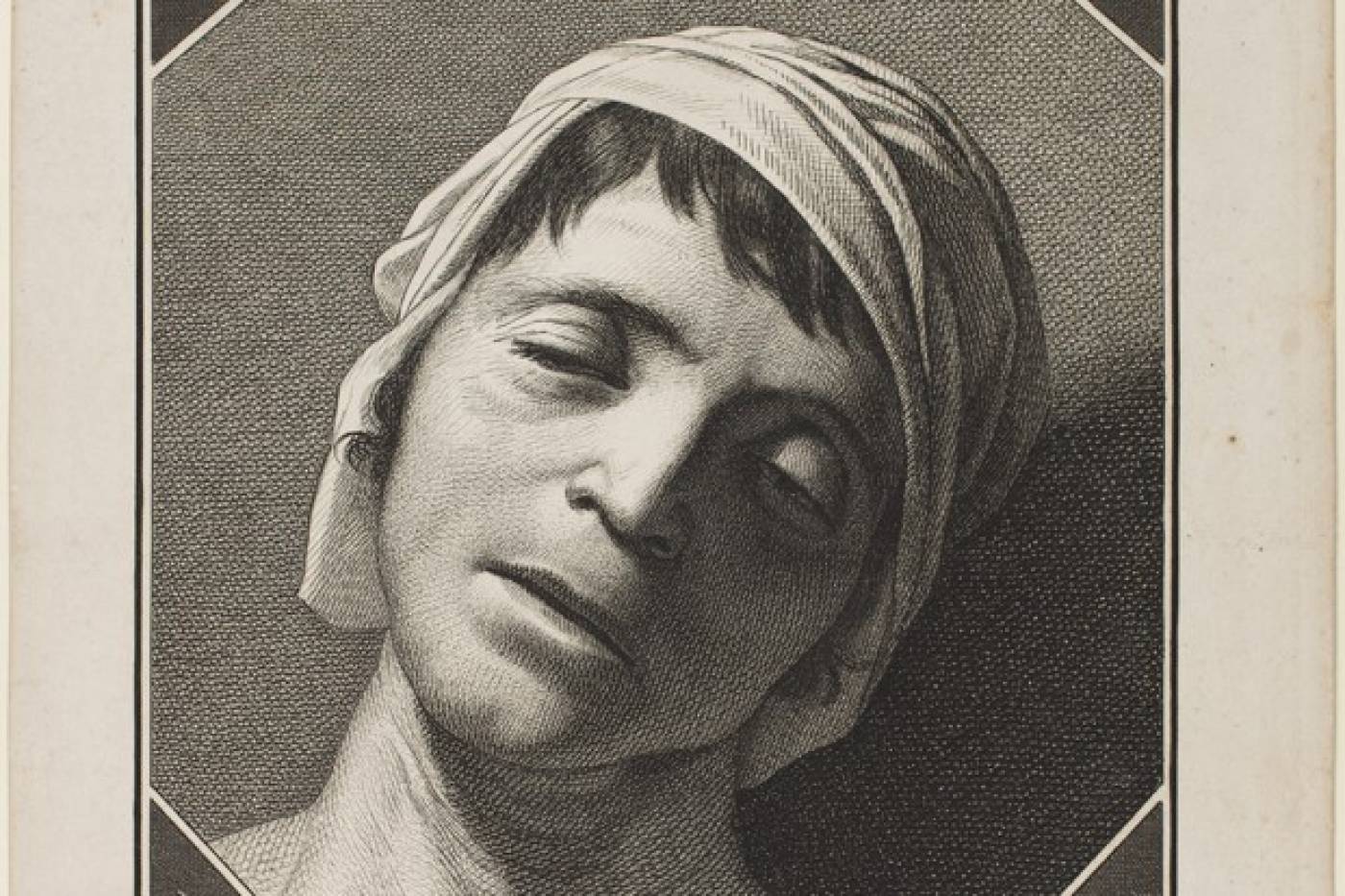
An iconic engraving of 'Friend of the People' Jean-Paul Marat portrayed as a Christ-like figure
This print of Jean-Paul Marat from 1794 is of an iconic image created by celebrated revolutionary artist Jacques-Louis David at the request of the revolutionary government. It was used to disseminate the image of Marat's sacrifice throughout the Republic.
Artist - Jacques-Louis Copia (after Jacques-Louis David). UCL Art Museum LDUCS-10556
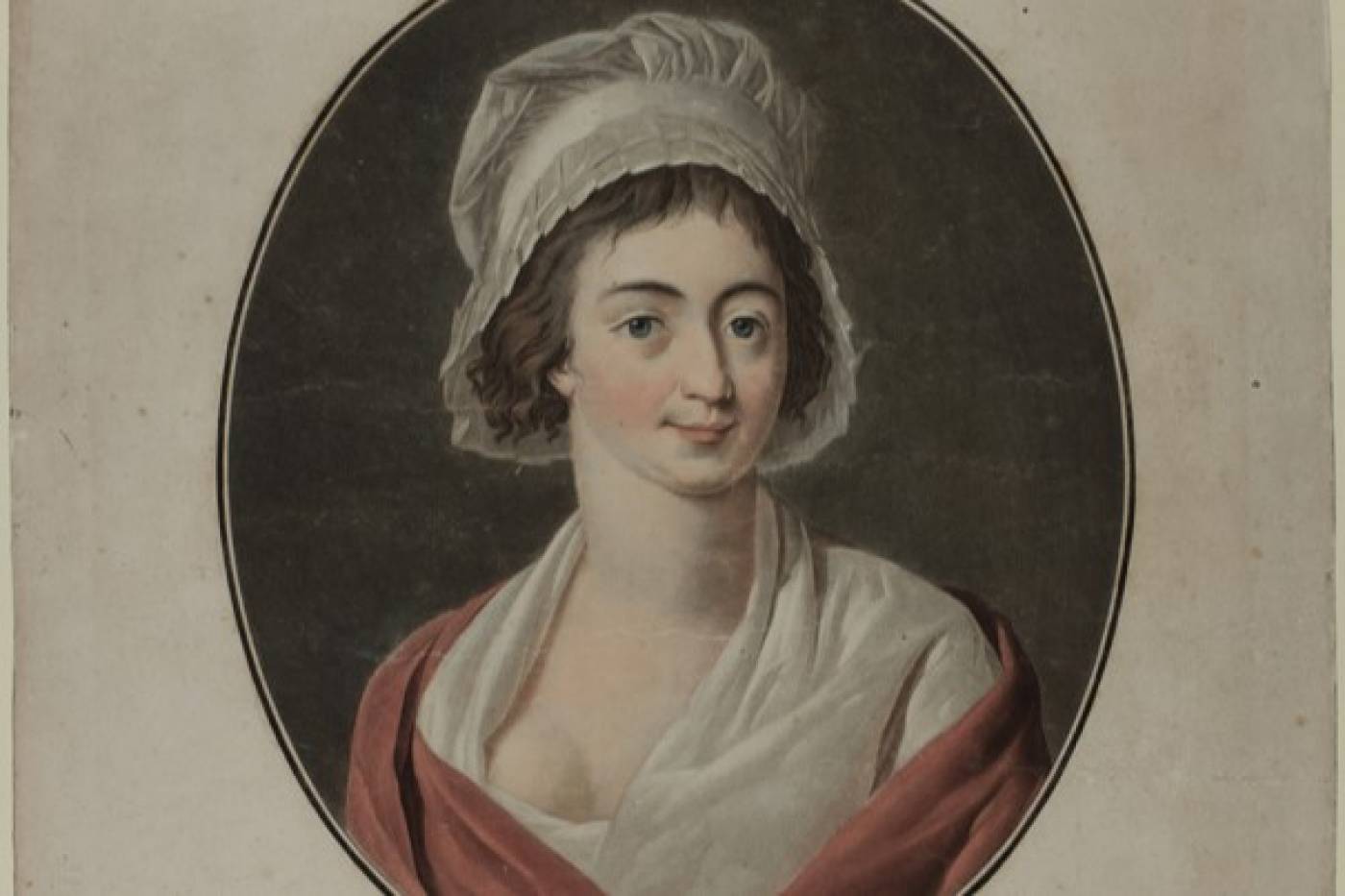
Portrayed with short hair in preparation for the guillotine 'she is leading us to our death, but she is showing us how to die'
Marie-Anne Charlotte Corday, 1793, who stabbed the 'Friend of the People' Jean-Paul Marat to death in his bath
by Pierre-Michel Alix. UCL Art Museum LDUCS-10542
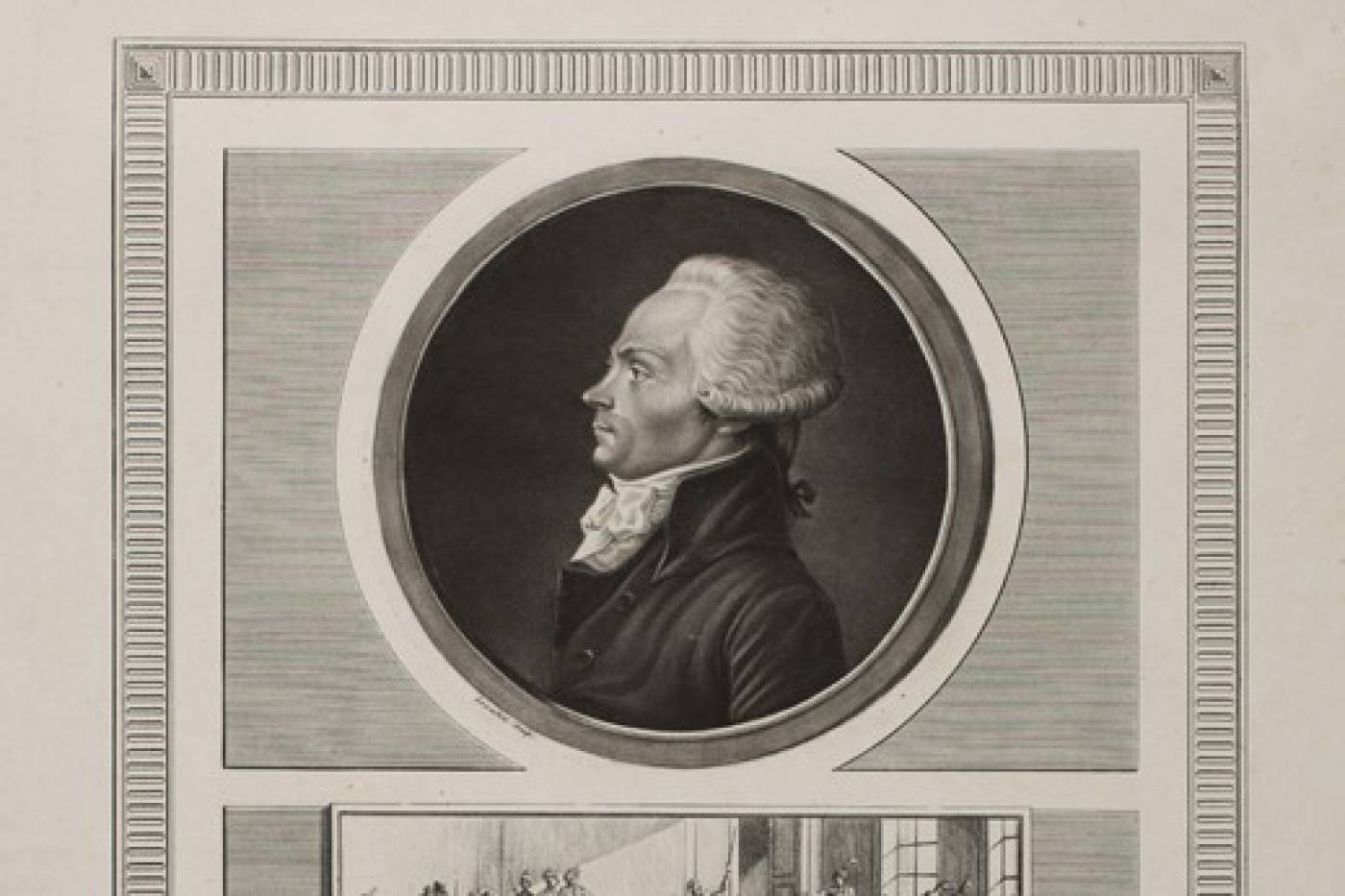
Robespierre is described as an ‘execrable tyrant’, 'nothing could quench his thirst for human blood’
Maximilien de Robespierre, 1798-1817,by Charles François Gabriel Levachez & Jean Duplessi-Bertaux,UCL Art Museum LDUCS-4536
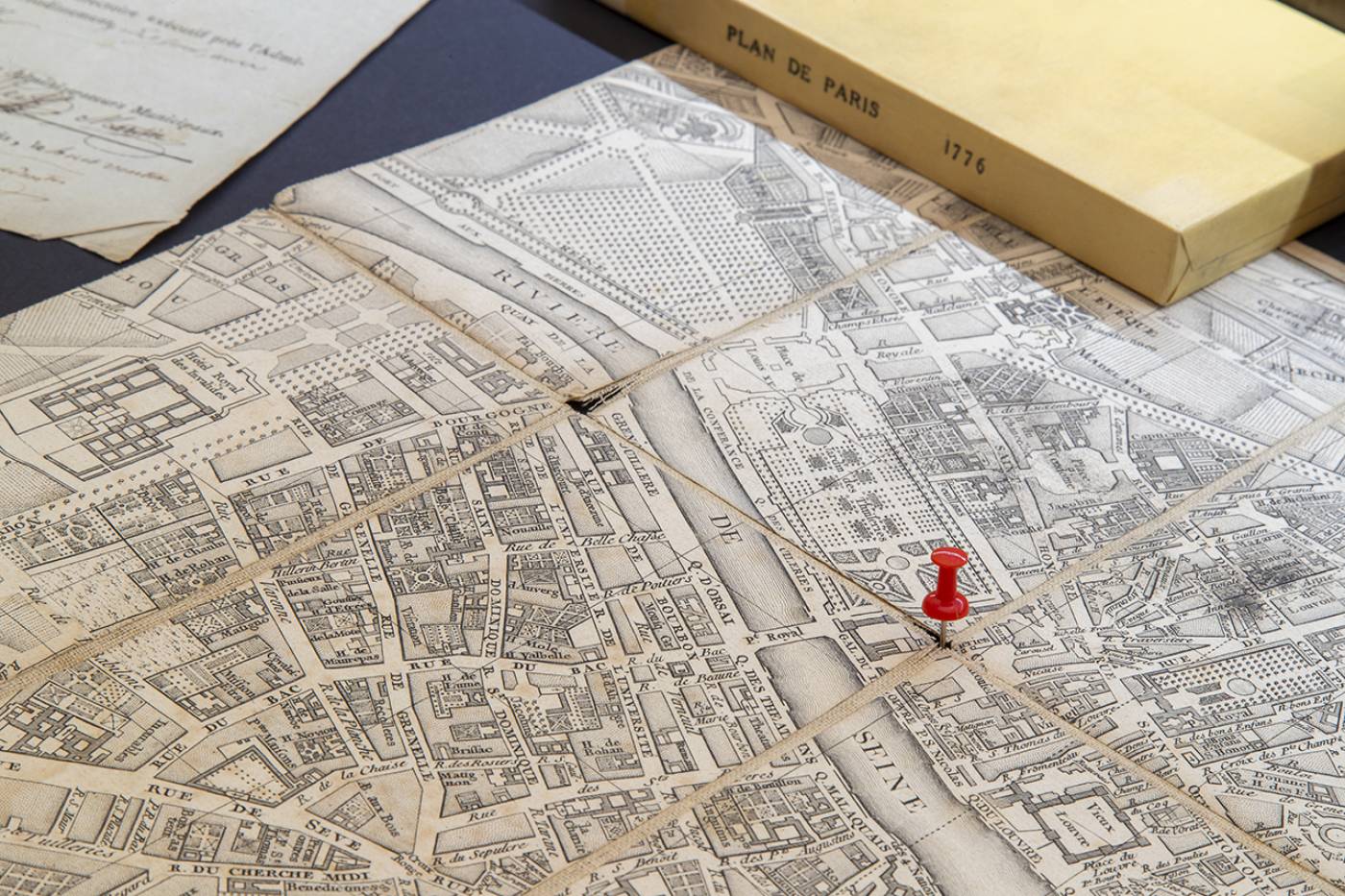
Extracts from the letters of dowager duchess D’Elbeuf, a hitherto unknown witness to the Revolution, feature in the exhibition
The Hôtel d’Elbeuf shared the square to its front – the Place du Carrousel [see pinpoint on map] – with the Tuileries Palace, which during the Terror housed the National Assembly and the Committee of Public Safety
Plan routier de la ville et faubourg de Paris, 1776 / chez Lattré. On loan from the Institute of Historical Research, School of Advanced Studies, EF.15 Lat. Photo: Mary Hinkley
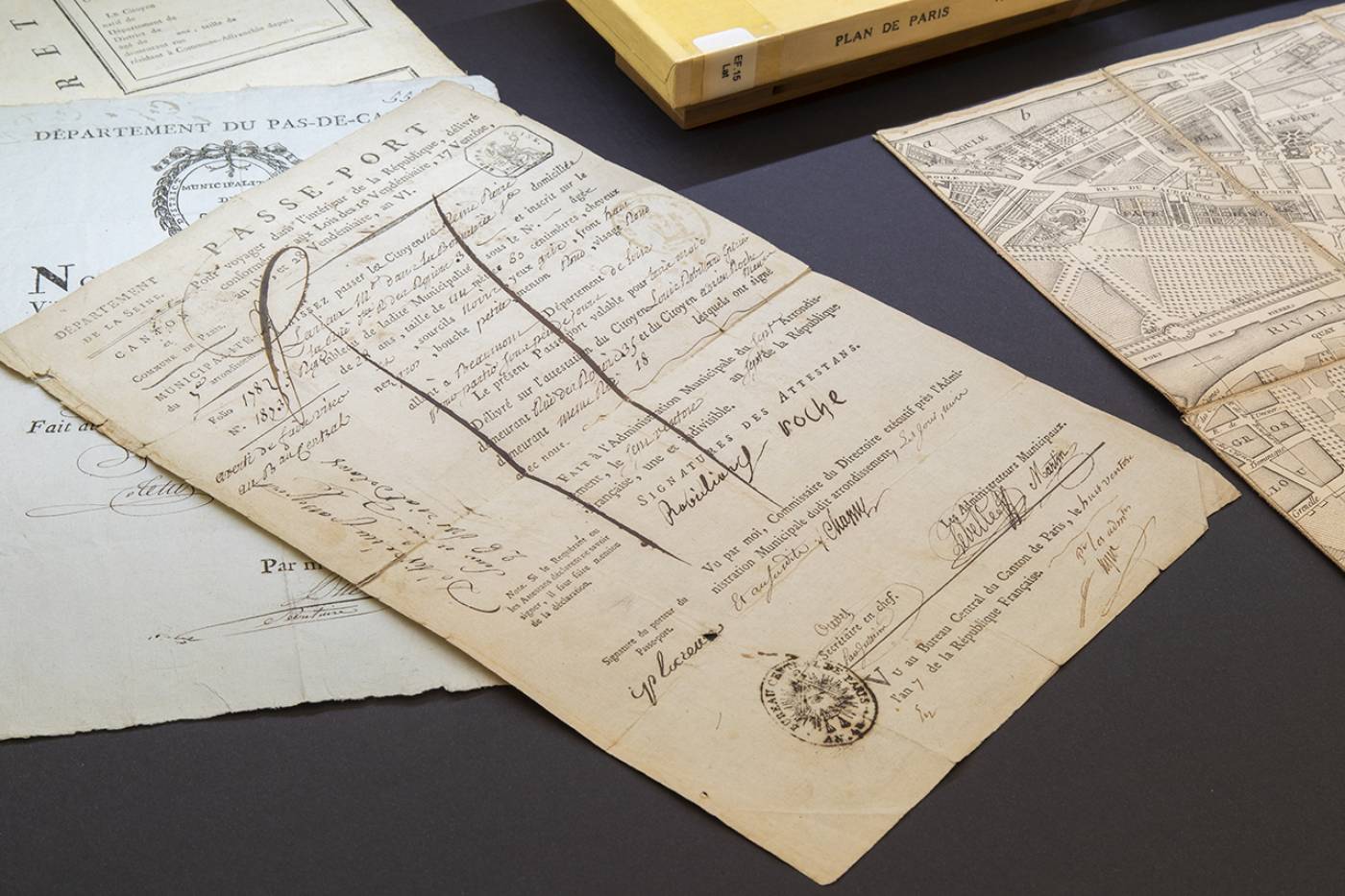
Passports and identity documents
New laws stipulated that even travellers within France should carry proof of identity. Passports and identity documents represented a contradiction between principles of universal liberty and the more pragmatic requirements of revolutionary government.
On loan from private collection. Photo © Mary Hinkley
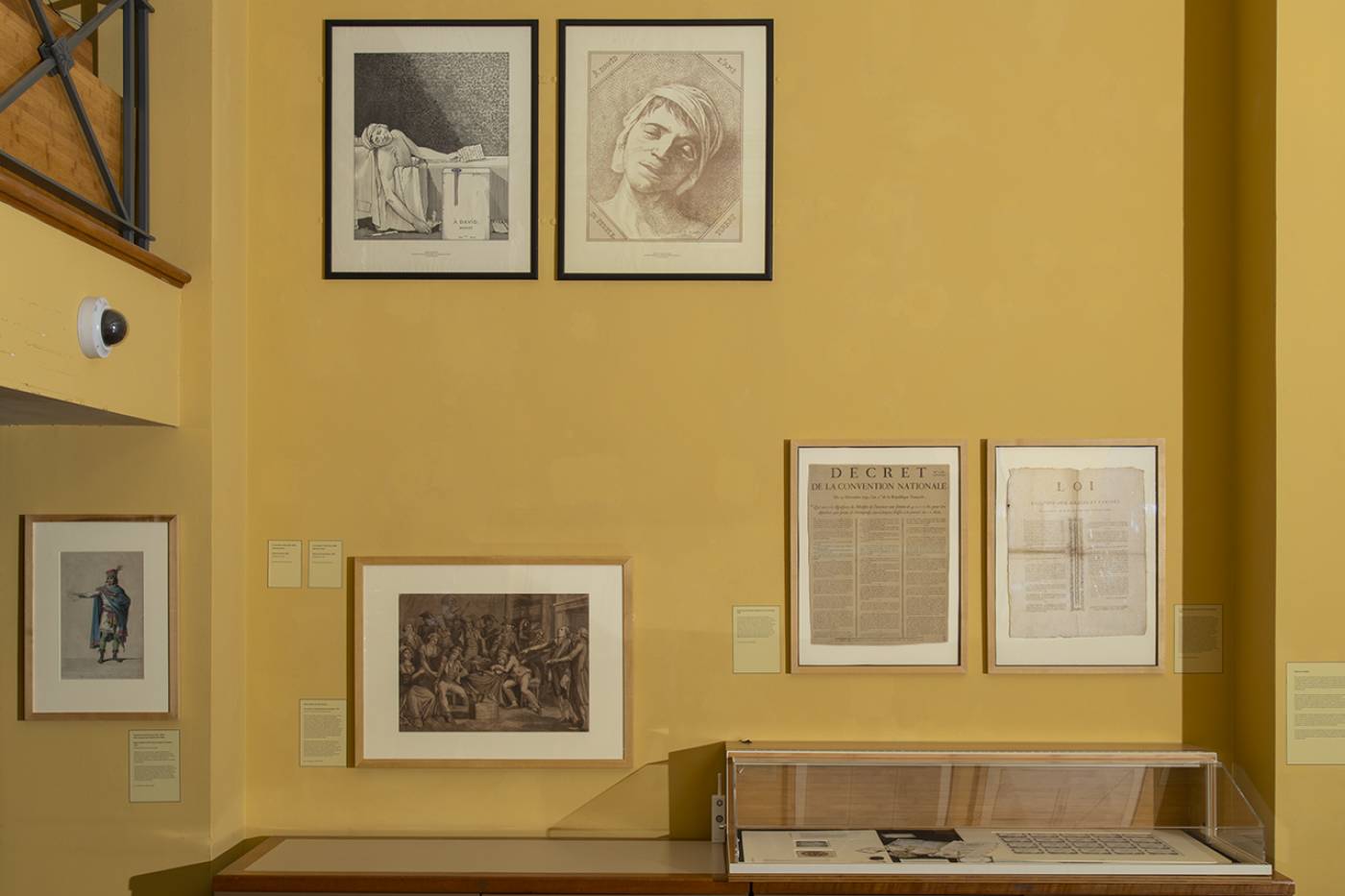
Liberty or Death
Photo: Mary Hinkley
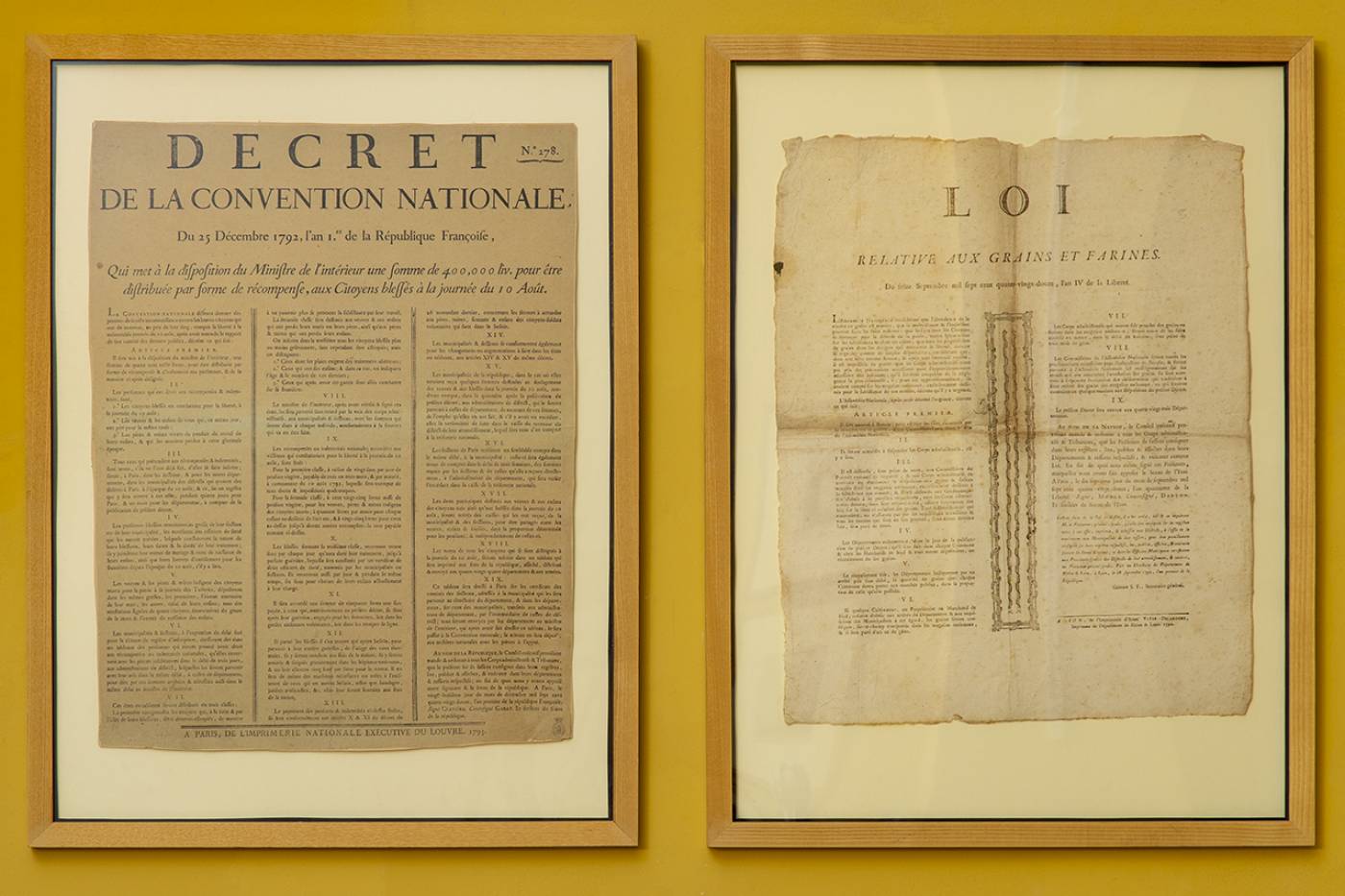
New laws required suspects to prove their own innocence, reducing the sentence to one of death or acquittal
Photo: Mary Hinkley
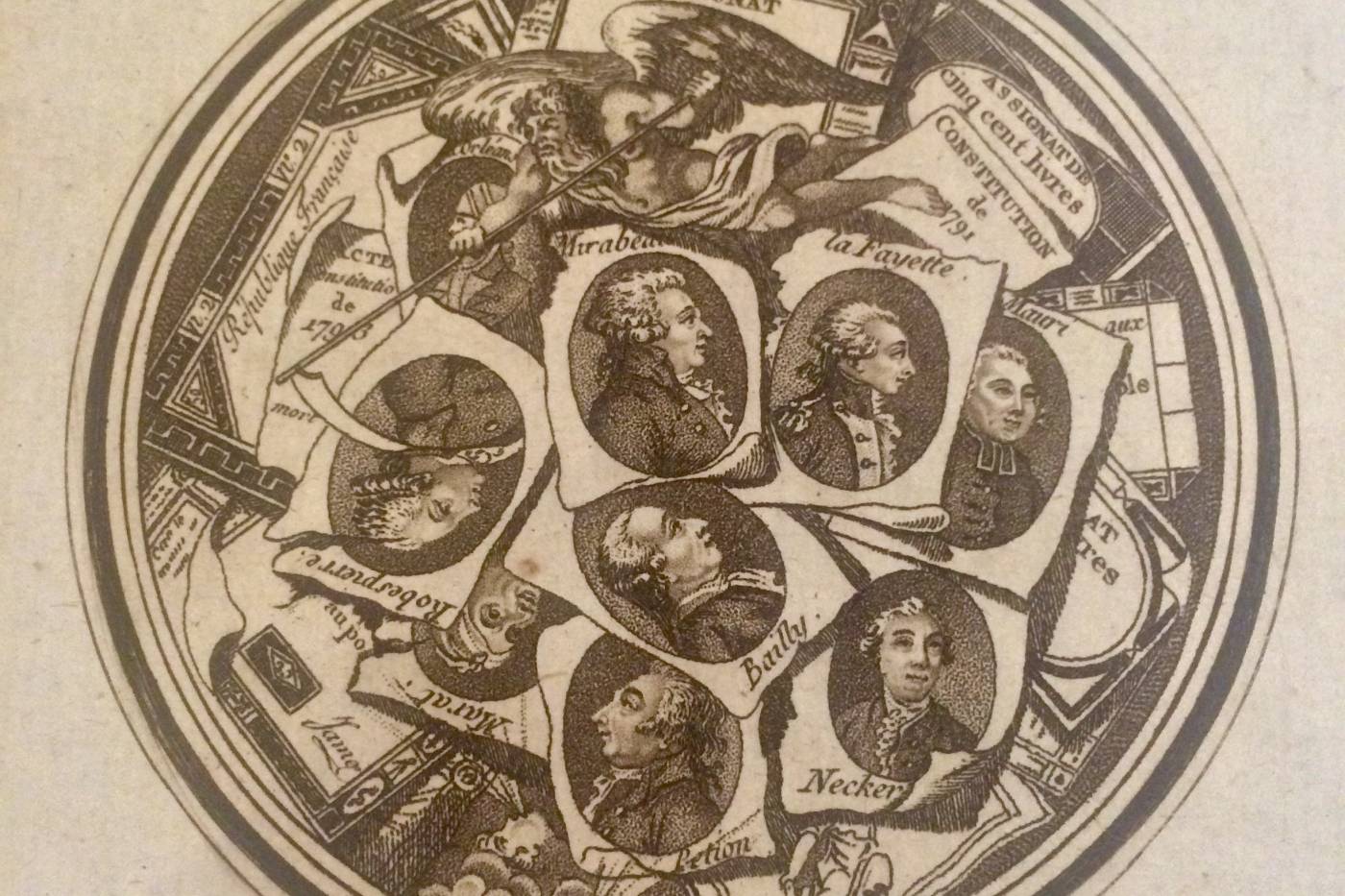
Portraiture helped familiarise people with images of the Revolution’s new leaders
Circular Print of Assignats and Prints of Revolutionary Characters used to Decorate a Tobacco Box (detail), c.1796.
Artist unknown. UCL Art Museum LDUCS-10129
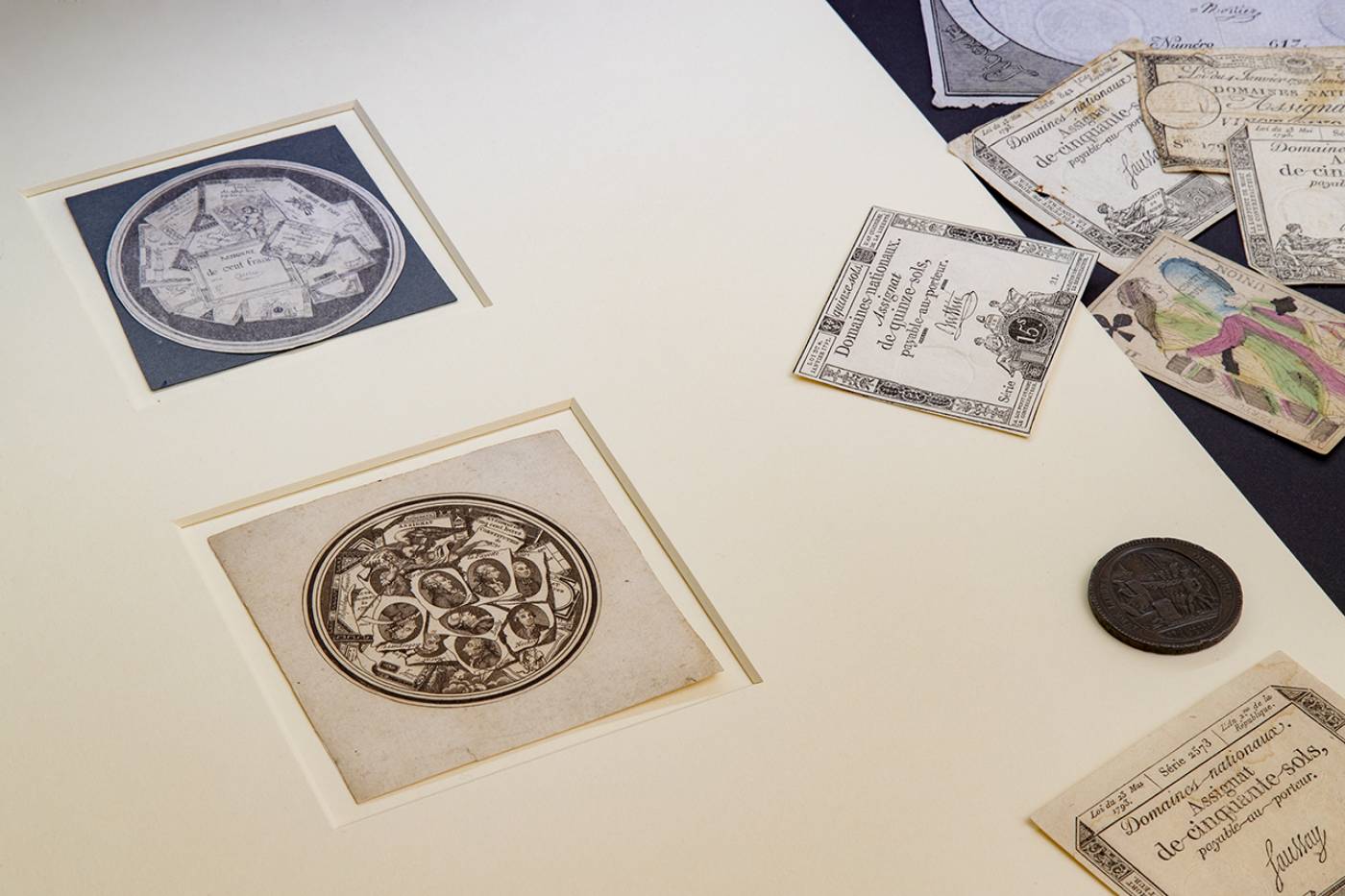
French Revolution currency, coins and paper notes known as assignats, playing cards and other ephemera from the period of the Terror
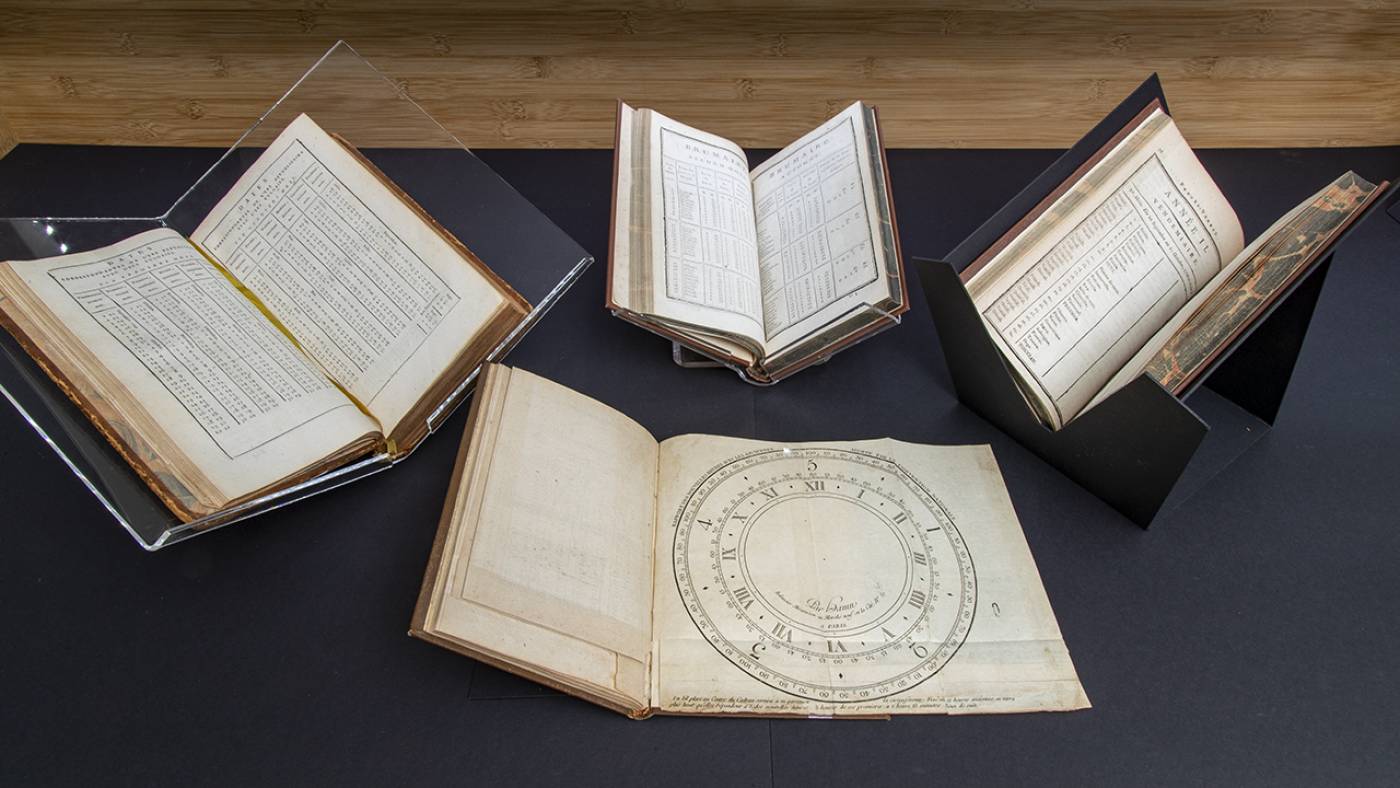
The Republican Calendar
The introduction of the Republican Calendar was an attempt to remake time itself.
Photo: Mary Hinkley
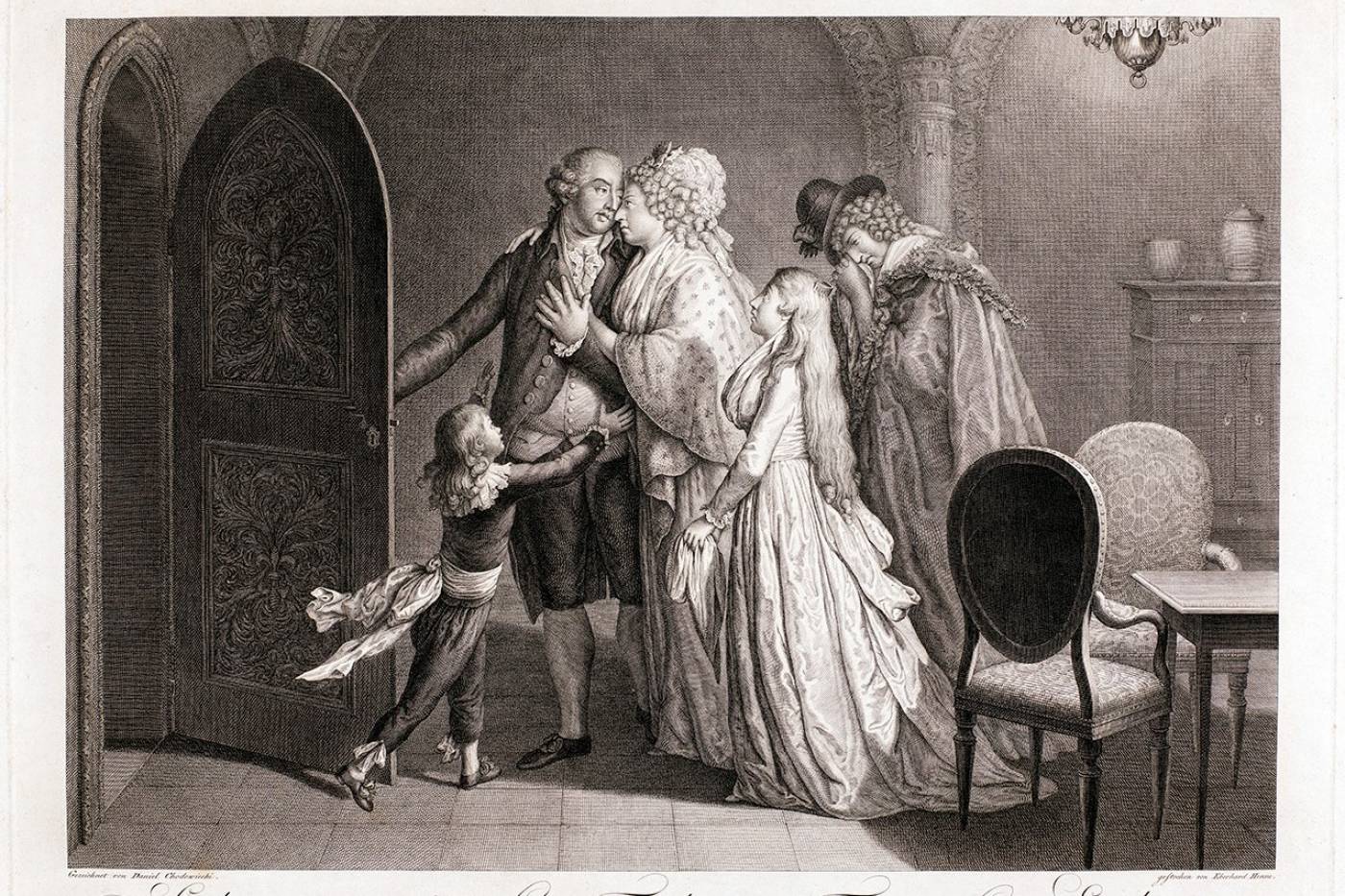
British and German images catering to a royalist audience beyond France were imbued with sentimental qualities
Louis XVI bids farewell to his family the day before his execution, c.1795-99.
by Eberhard Siegried Henne (after Daniel Nikolaus Chodowiecki, Daniel Nikolaus). UCL Art Museum LDUCS-10553
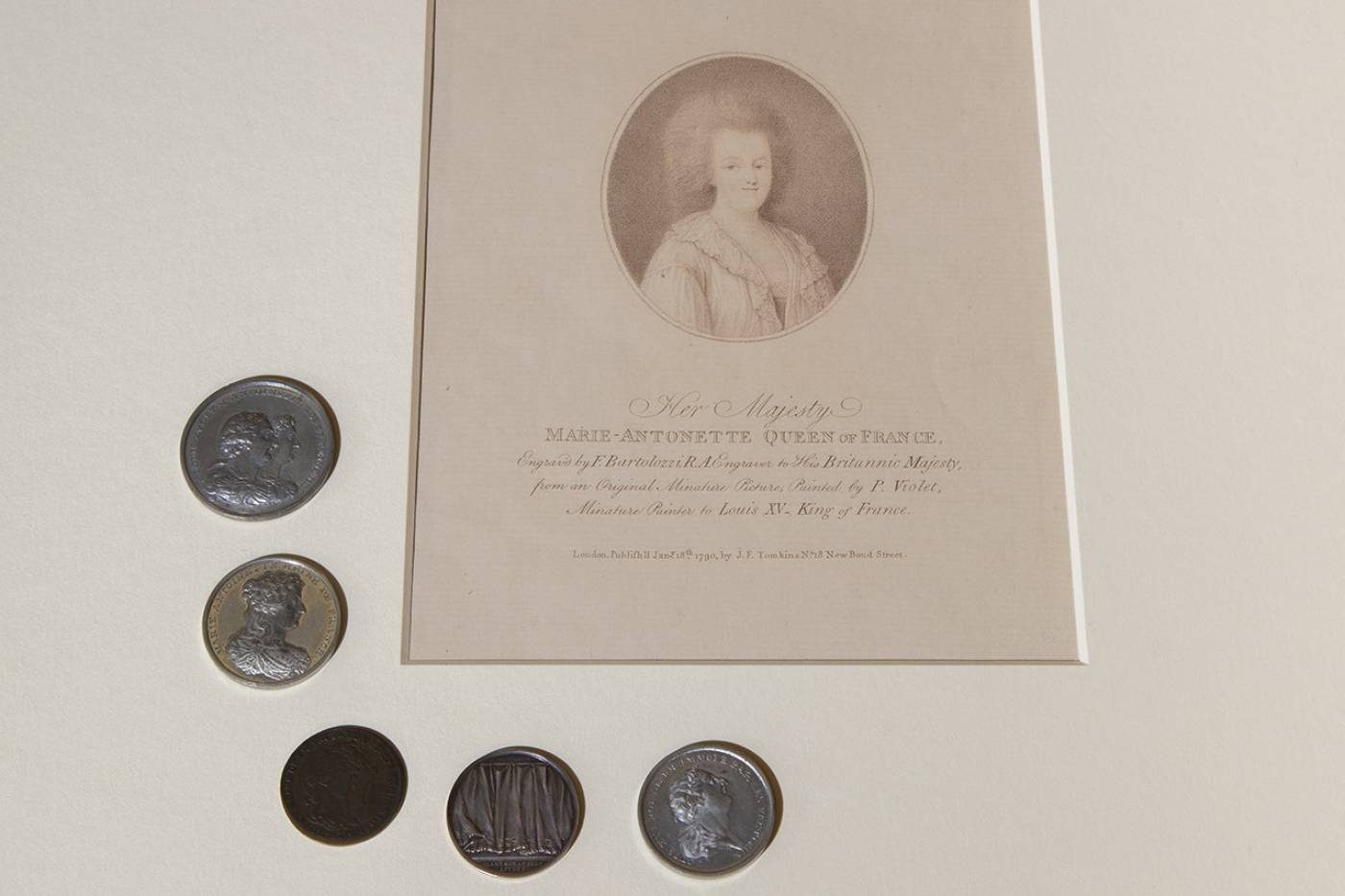
Marie-Antoinette.
Photo:Mary Hinkley
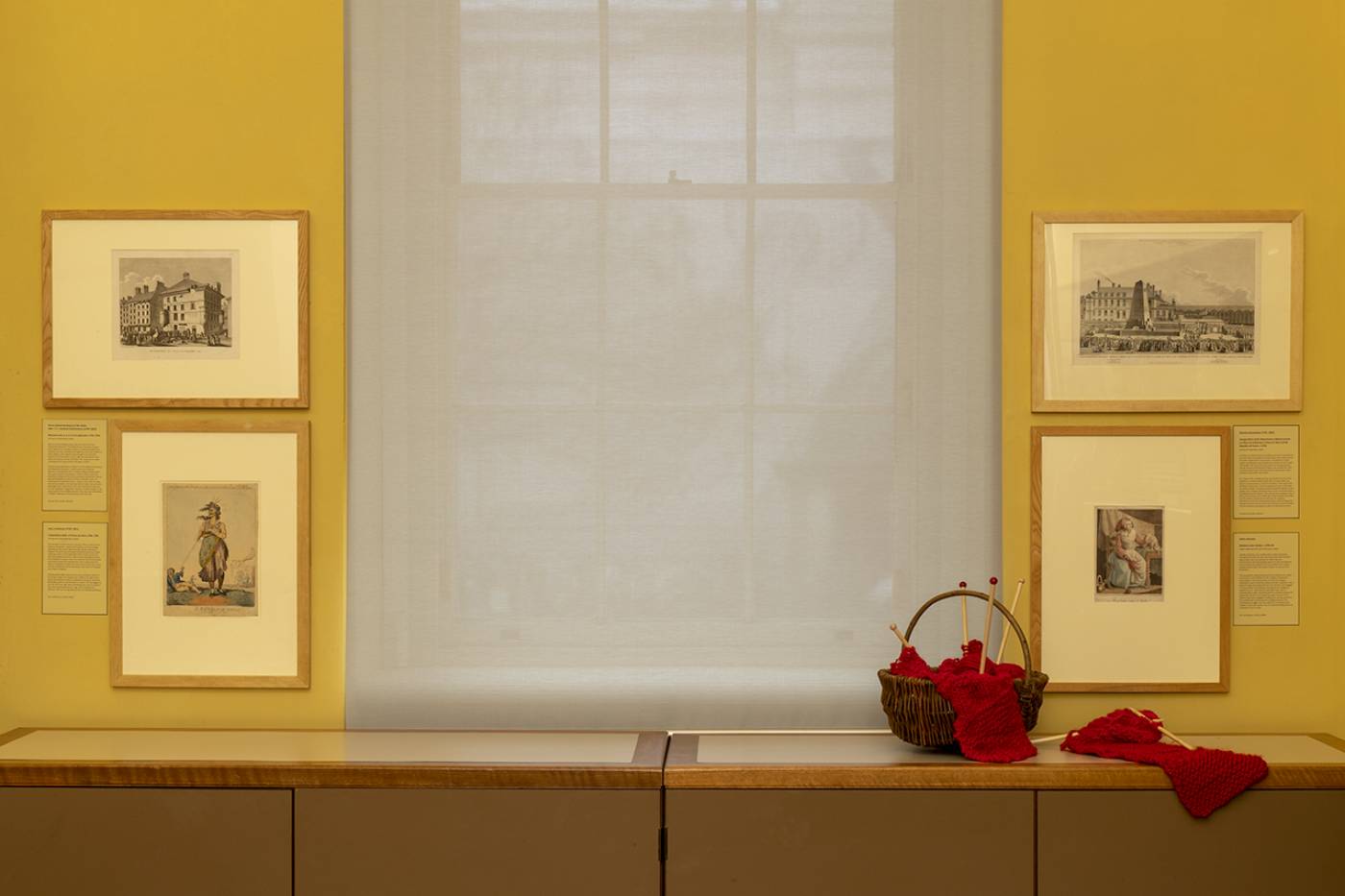
Revolutionary Paris
The largest city in Europe after London, Paris was transformed during the Terror years. The emigration of the wealthiest nobility changed the population balance and the urban economy.
Photo © Mary Hinkley
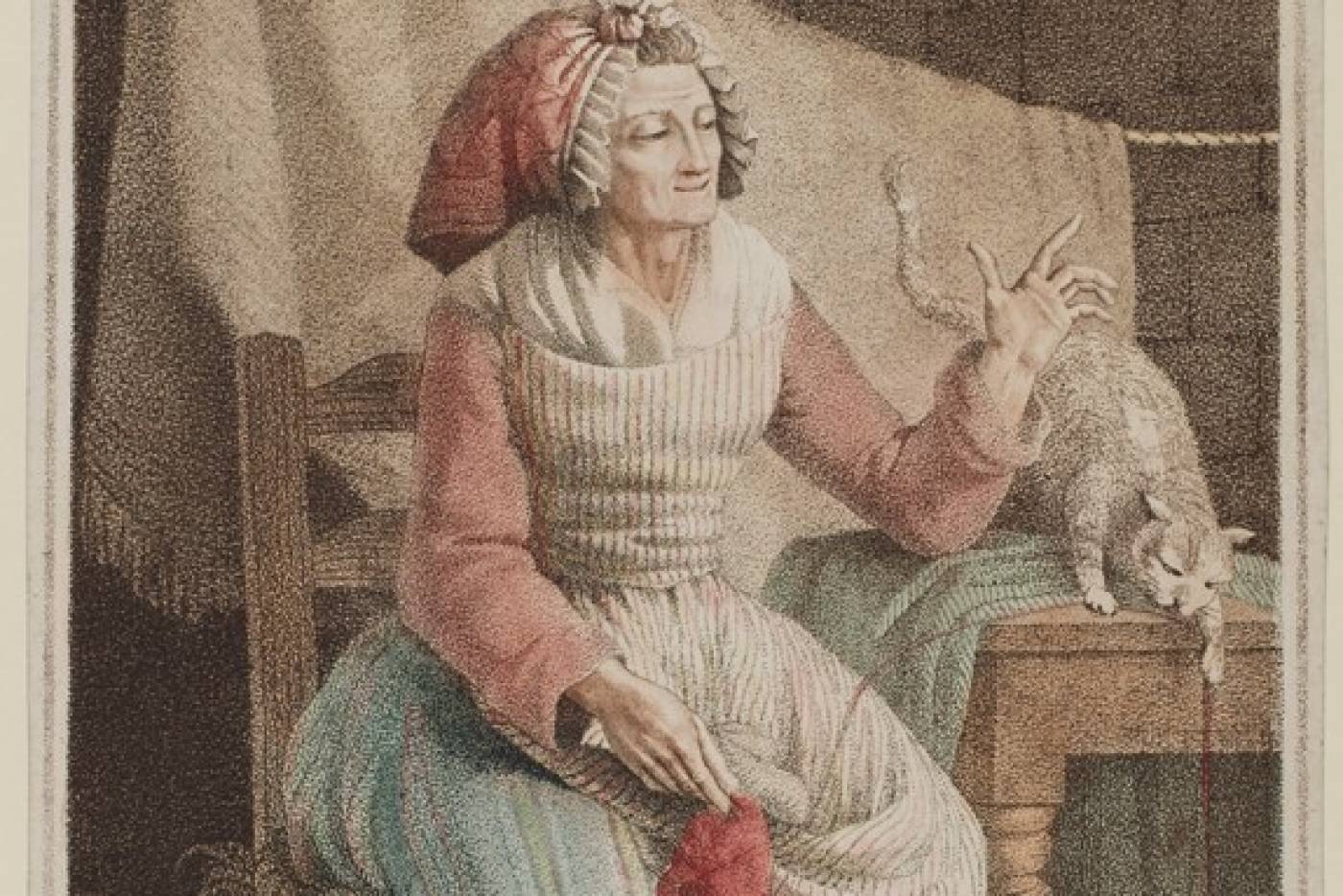
Madame sans Culotte, c.1793-94,
Artist unknown. UCL Art Museum LDUCS-10098
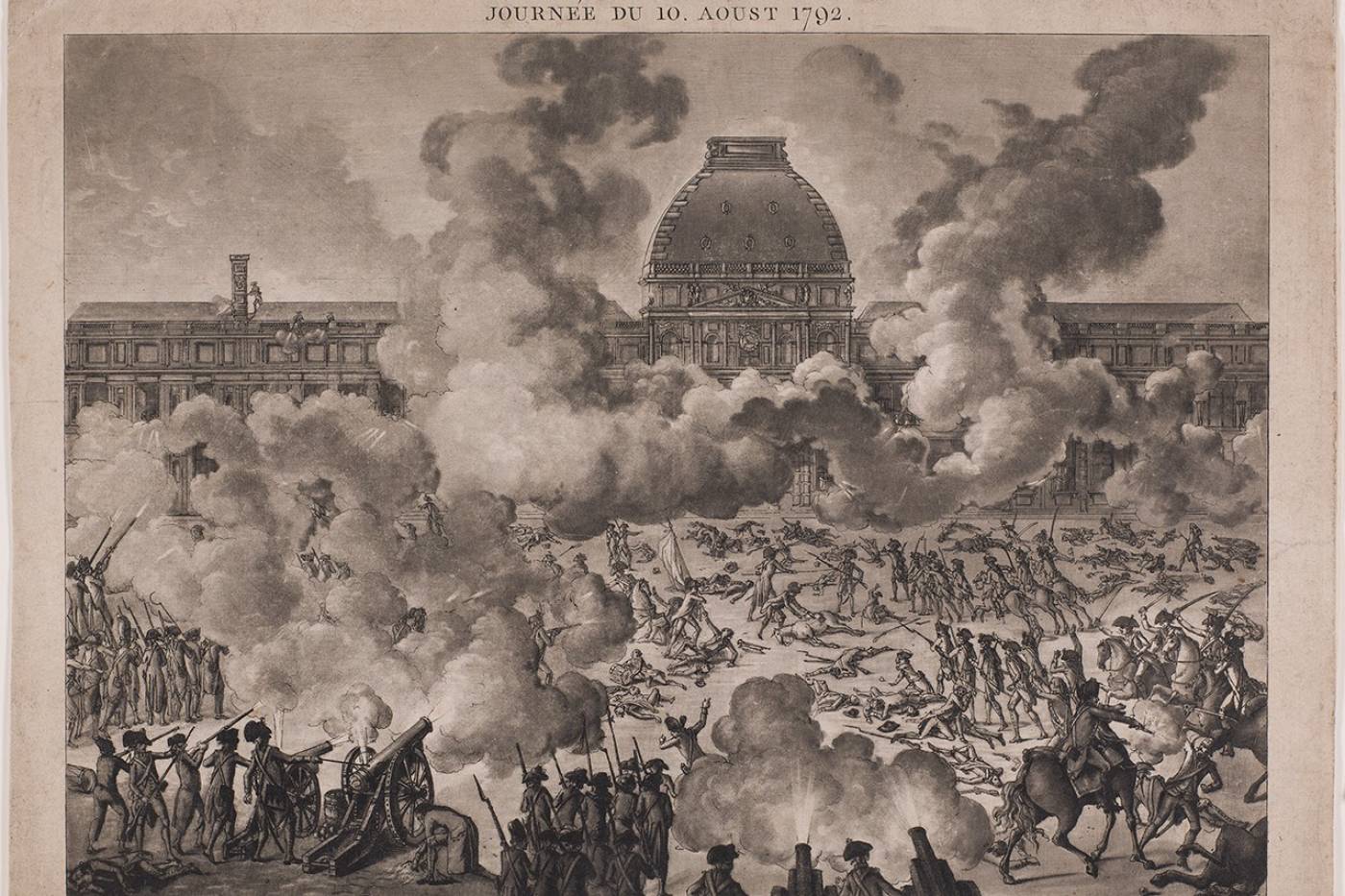
The Day of the 10th August: To brave sans culottes, c.1792-93,
Artist unknown. UCL Art Museum LDUCS-10142
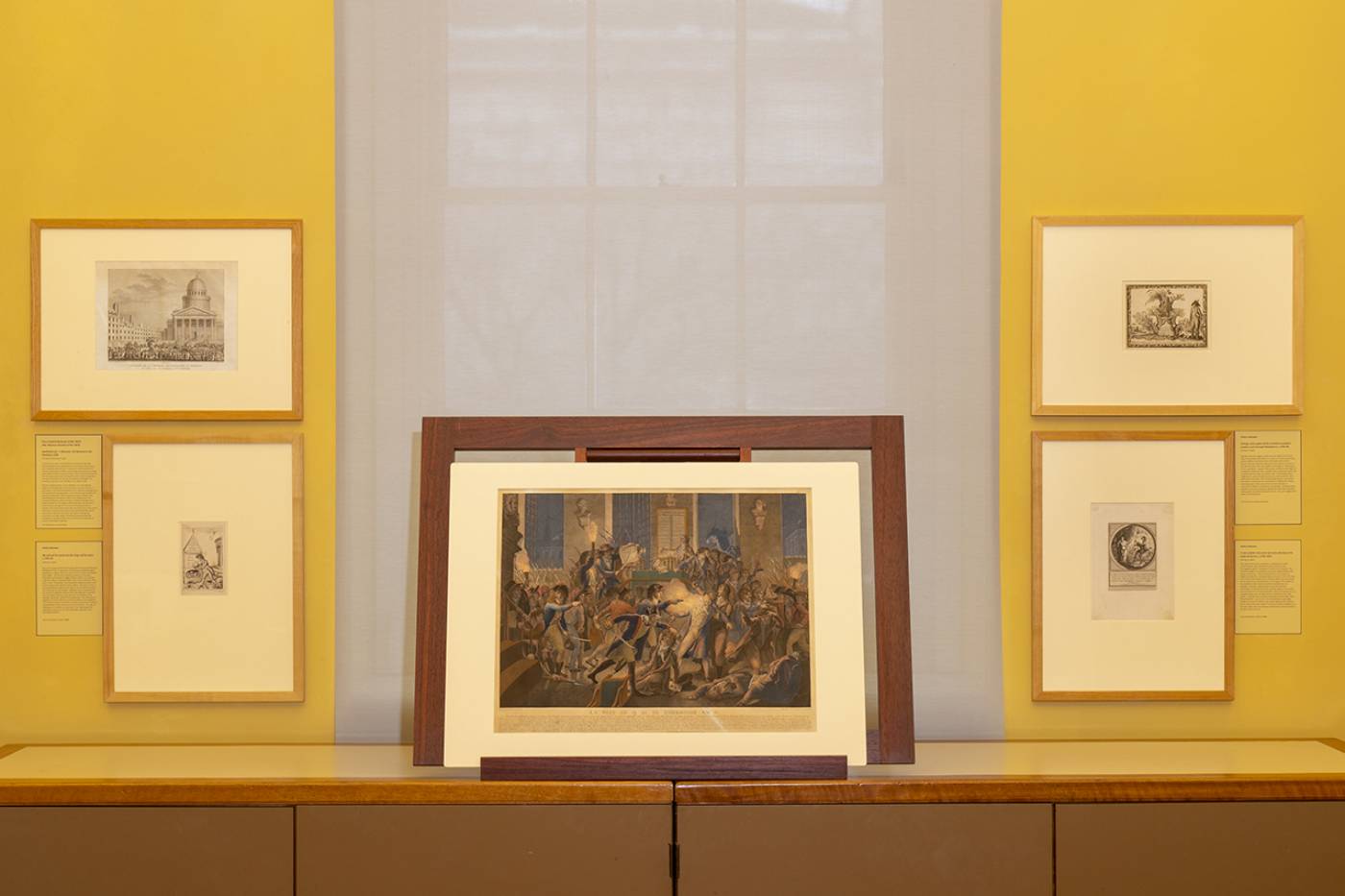
The End of the Terror
The coup of summer 1794 known as 9 Thermidor, after its date in the Republican Calendar marked the end of the Terror. Robespierre and his supporters were arrested and guillotined. This coup rmarked a withdrawal from policies of terror but also the end of many earlier democratic and welfare gains. Photo: Mary Hinkley
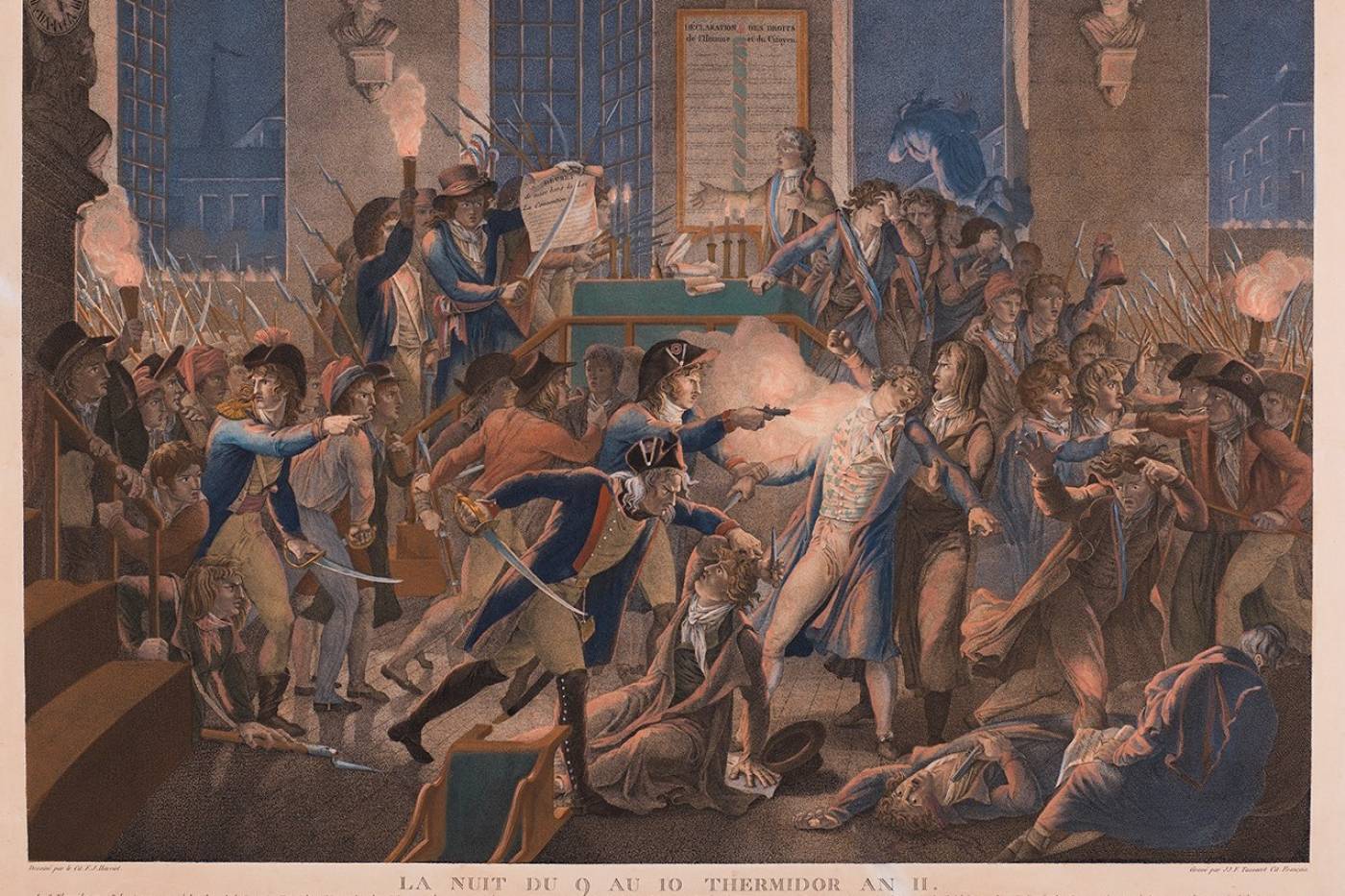
The Night of the 9 and 10 Thermidor Year II, c.1794-1805
by Jean-Joseph-Francois Tassaert (after Fulchran Jean Harriet). UCL Art Museum LDUCS-10581
What does it mean to witness Terror and what role do images play in how we comprehend acts of violence?
'...cleverly curated...'― Ruth Scurr, 'The grisly art of Revolutionary France', The Spectator magazine, issue March 2020
The period of the French Revolution known as the Terror, which lasted from 1792−94, gave rise to many of the most memorable and dramatic images of this crucial moment in modernity. These images were central to revolutionary attempts to regenerate all aspects of life - from clothing and speech to money and maps, and with the introduction of the Republican Calendar, to remake even time itself. In our contemporary political context, in which ‘Terror’ has taken on a variety of disturbing meanings, and in which the proliferation of images plays an increasingly significant role in how we comprehend acts of political violence, it is ever more important to examine this radical period in French history.
Tracing the tumultuous period from the trial and execution of Louis XVI to the fall of Robespierre, Witnessing Terror includes a variety of printed images representing key events and personae. From portraits of revolutionary martyrs to dramatic scenes of Parisian crowds, these prints give us insight into how people understood life during the Terror. As well as a number of caricatures, street scenes, and more overtly artistic prints, the exhibition displays more everyday objects, such as paper money, well-worn passports and playing cards. Drawing out the contemporary relevance of this revolutionary iconography, Witnessing Terror also shows work by the renowned conceptual artist, poet, and gardener Ian Hamilton Finlay (1925−2006) that engages with the long-term legacy of the Terror. Contemporary responses also include new commissions by artists Sean Curran and Rebecca Loweth as well as playright Nicola Baldwin.
This exhibition is part of a programme of ongoing engagement with UCL Art Museum’s unique holdings of prints related to the French Revolution, acquired via the Cultural Gifts Scheme. To learn more or get involved write to us.
Earlier collaborative projects include: Revolution under a King: French Prints, 1789−92 (2016) and Rousseau 300: Nature, Self and State (2012).
It is supported by funds from the British Academy and Arts and Humanities Research Council. Thanks are extended to the Institute of Historical Research, School of Advanced Study, University of London and The Estate of Ian Hamilton Finlay and Victoria Miro, London/Venice for their loans.
Click here to follow our French Revolution blog.
- Terror and Witnessing
The Terror remains a vexed term that has for many become synonymous with the French Revolution, clouded by myths that emerged in the years that followed. A system of political institutions and practices, the Terror was accompanied by new rhetorical and cultural strategies. It did not happen overnight but developed as a tactical response to a series of military crises, rumours, and fears. Images played a crucial role in the operation of Terror, as well as in its subsequent representation. This exhibition considers what it means to witness Terror, then and now. In particular, it features extracts from the recently discovered letters of Catherine-Innocente de Rougé, duchesse d’Elbeuf (1707−94), who maintained a correspondence with an unknown friend throughout the Revolution. Living in her private residence, the Hôtel d’Elbeuf, which was located only metres from government offices during the Terror, the duchesse d’Elbeuf commented freely on the situation in Paris in a way that would have sent her to the guillotine, had her correspondence been found.
The letter series, found among police files in the French national archives by Professor Colin Jones (Queen Mary University of London), is the subject of an ongoing research project of transcription and editing. It is the starting point for a broader discussion of how, in the period of censorship and surveillance under the Terror, individuals strove to maintain freedom of expression and develop a critique of government.
The Duchesse d’Elbeuf’s Letters to a Friend, 1788−94 AHRC Research Grant (2018−2020), Principal Investigator: Professor Colin Jones, History Department, Queen Mary University of London
Contemporary responses
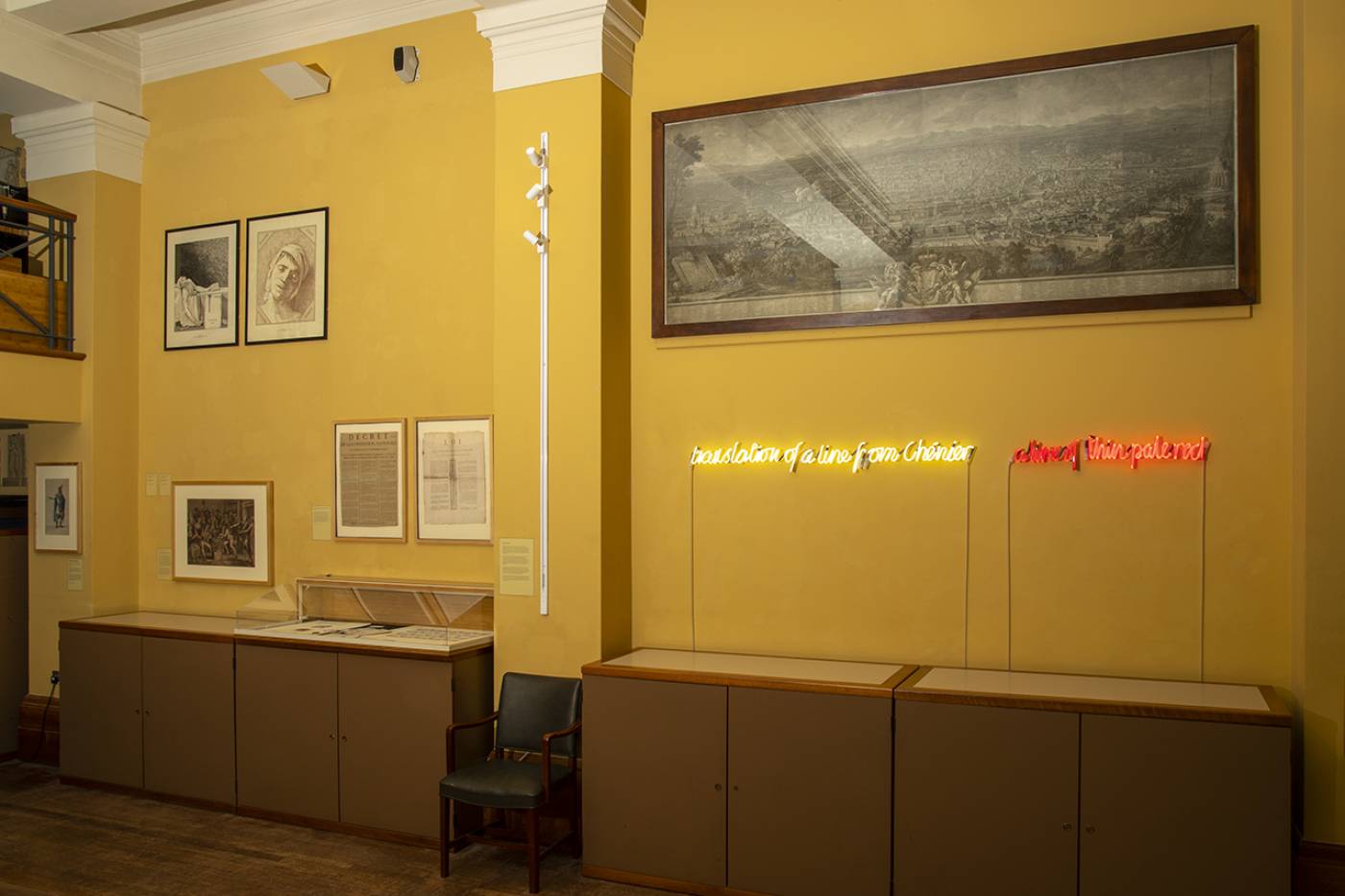
Ian Hamilton Finlay, Translation of a Line from Chenier: A Line of Thin Pale Red, 1989
©The Estate of Ian Hamilton Finlay. On loan, courtesy the Artist’s Estate and Victoria Miro, London/Venice. Photo © Mary Hinkley
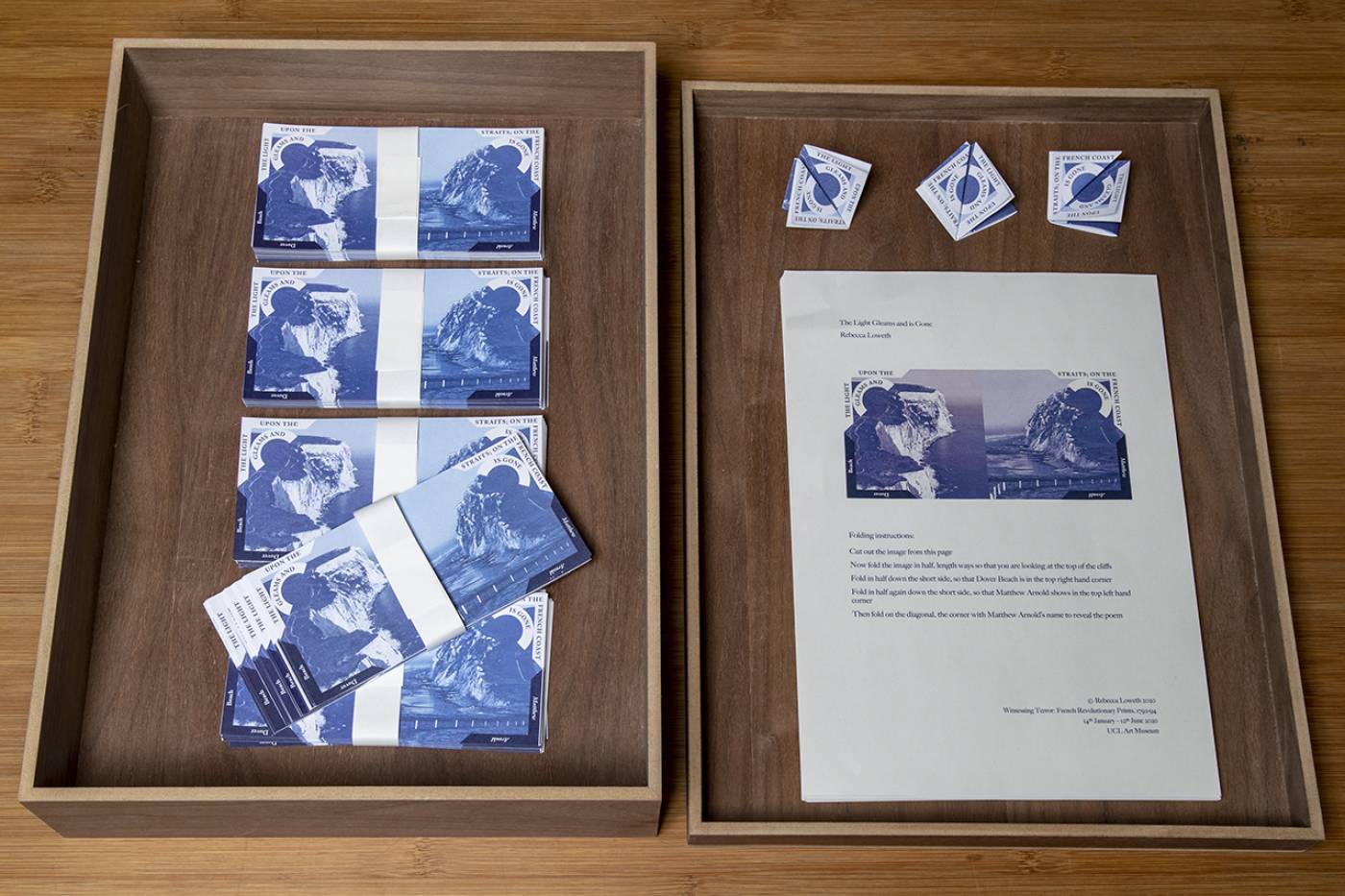
Rebecca Loweth, The Light Gleams and is Gone, 2020 - paper-folding provocation
Photo: Mary Hinkley (c) Rebecca Loweth
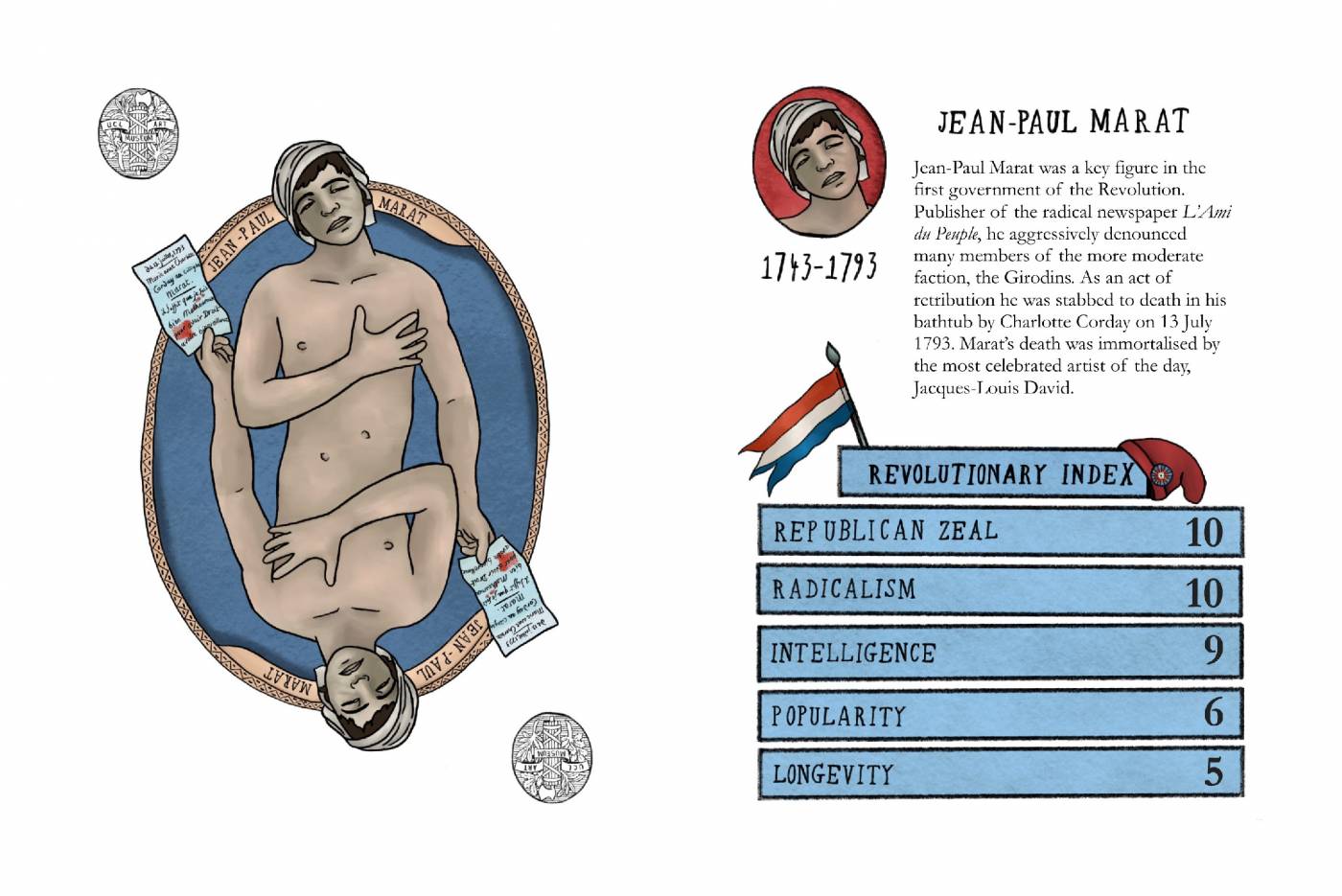
Sean Curran, The Terror - Who's Who card game, 2020
Featured - Jean-Paul Marat . (c) Sean Curran
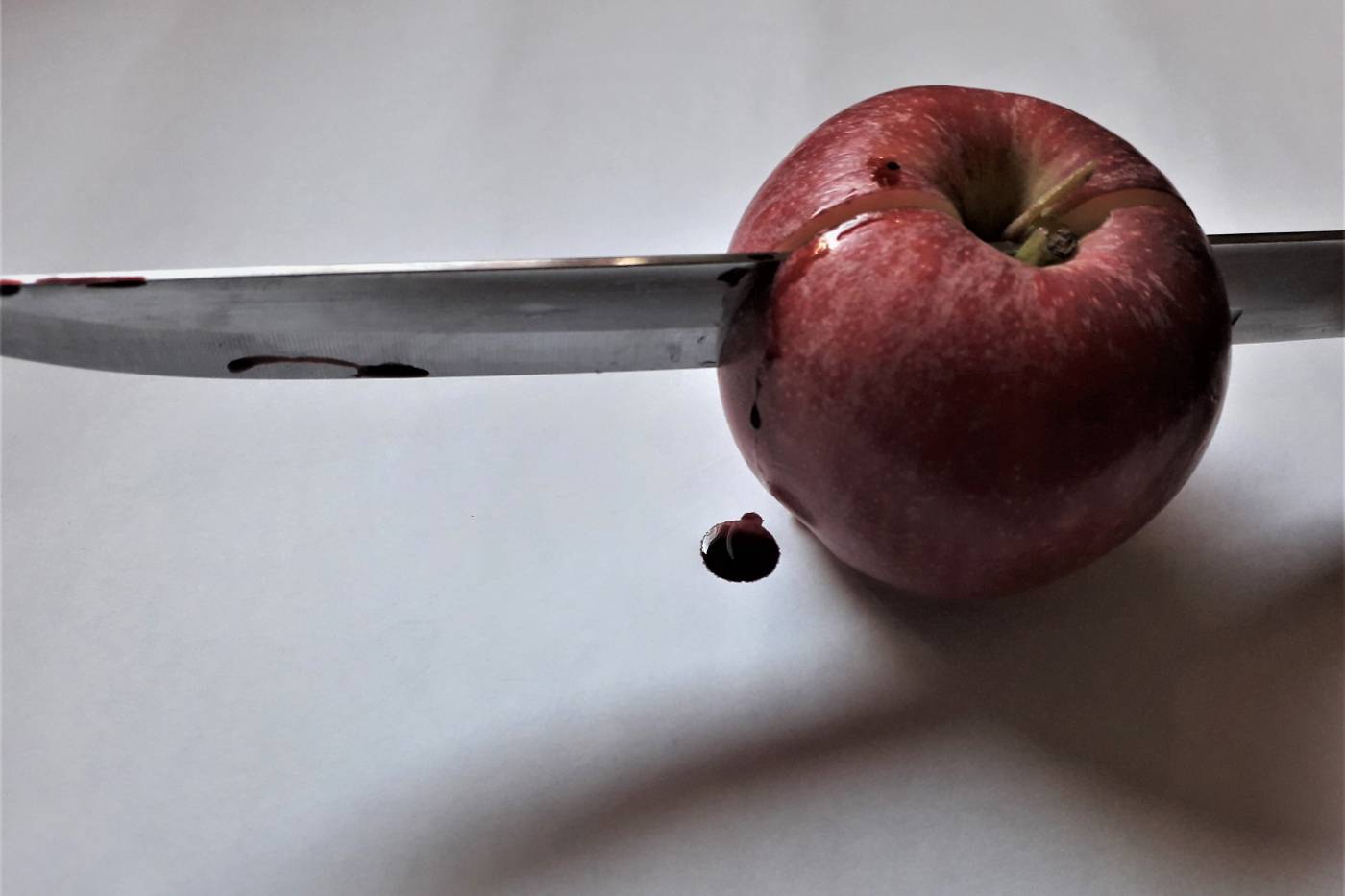
New play by Nicola Baldwin, The Duchess, 2020
Photo: Nicola Baldwin
The exhibition features an iconic neon text work by Ian Hamilton Finlay created on the occasion of the 200 year anniversary of the French Revolution in 1989. A series of new commissions further explore the themes in the exhibition: Illustrator Sean Curran created a card deck that draws on the portraiture in the museum's collection of French Revolutionary prints associated with the Terror, and collage artist Rebecca Loweth has produced a paper-folding game in response to the paper culture that proliferated during the French Revolution. Both commissions engage with the use of images during the Terror and can be downloaded and printed at home and played. Playwright Nicola Baldwin and director Saskia Marland have collaborated to produce a new short play inspired by the voice of a hitherto unknown witness to the terror which is the subject of new research.
- Ian Hamilton Finlay, Translation of a Line from Chénier: A Line of Thin Pale Red, 1989
Conceptual artist, sculptor, gardener, and poet Ian Hamilton Finlay returned frequently to the topic of the French Revolution throughout his career. It represented for him a moment of profound change, signalling a moral as well as political leap that heralded advances in secular democracy and social progress. Revolution provided a rich subject; he first received international attention for his guillotine installation A View to the Temple at Documenta 8 in Kassel in 1987 and thereafter the guillotine became one of the most enduring elements of his iconography.
On diplay is Translation of a Line from Chénier: A Line of Thin Pale Red. Finlay refers to André Chénier, a poet who, despite having written several poems in support of the Revolution – including Jeu de Paume, dedicated to Jacques-Louis David, and an ode on the subject of Charlotte Corday – was guillotined on 25 July 1794, just days before the end of the Terror. His brother Marie-Joseph, himself a famous playwright who spoke out against censorship of the theatre, had become a member of the National Convention during the Terror. In this work made in 1989, the bicentennial of the French Revolution, scarlet and white neon form a homage to the executed poet, riffing a quotation from the poet Stéphane Mallarmé. The line of red refers to the guillotine, as well as the red ribbon worn around the necks of those who had lost their loved ones to the blade.
Two of Finlay’s prints, made with Gary Hincks and the Wild Hawthorn Press, are also shown in this exhibition on the entrance wall. These images appropriated Jacques-Louis David’s portraits of revolutionary martyrs, as well as prints of the dying Marat, and Finlay also made versions of them as stone wall pieces.
Translation of a Line from Chénier: A Line of Thin Pale Red is on loan courtesy of the Artist’s Estate and Victoria Miro, London/Venice.
- Rebecca Loweth, The Light Gleams and is Gone, 2020
The Light Gleams and is Gone is inspired by the paper culture of the French Revolution - prints, currency, official documents, playing cards, and other ephemera. Particularly during the Terror many images carried hidden messages, revolutionary and counter revolutionary. Loweth gives this heritage a twist drawing on contemporary British-European affairs. The work is an 'exhibition-take-away'. It comprises of a stack of A4 sheets with instructions to fold another piece of paper - with image and text, its format akin to that of a banknote. The 'notes' are presented in wrapped bundles like wads of cash. Following the guidance, the image transforms and a line from Matthew Arnold's 1867 poem Dover Beach is revealed.
Please download the commission here to print and make it at home.
Rebecca Loweth's practice focuses on the concept of artifice and the aspirations of ideals. Her work can take the form of film, collage and sculpture. Loweth is a tutor at the UCL Slade School of Fine Art where she leads a programme on Collage.
- Sean Curran, The French Revolution - The Terror - Who's Who card deck, 2020
This commission aims to introduce those who play the game to the figures they depict. The game is a game of trumps, a game of power, suited to the themes explored in the exhibition. The cards can also be used in the exhibition as an education tool as well as in teaching sessions that draw on the Museum's collection of French Revolutionary Prints. There are twenty cards in the deck.
Sean Curran drew on an earlier portfolio of exhibition interpretation and learning materials produced for museums and English Heritage sites to create this commission, including for Sutton House where he leads the learning programme. His creative practice is informed by an MA in Museum Education and a PhD that focused on Queer Heritage, both awarded by UCL Institute of Education.
- Nicola Baldwin,The Duchess, 2020
YouTube Widget Placeholderhttps://www.youtube.com/watch?v=lOilK-874gU The Duchess is a short play written by playwright and Creative Fellow at the UCL Institute of Advanced Studies Nicola Baldwin and conceived in collaboration with director Saskia Marland for site specific performance at UCL Art Museum. The play’s protagonist is Innocente-Catherine Rougé, elderly Duchess of Elbeuf, who lived through the French Revolution and Terror in a grand house overlooking the guillotine. As other aristocrats were arrested, executed, or fled Paris, the duchesse d’Elbeuf wrote a stream of letters about her life in the city and these are the subject of a new research project led by Professor Colin Jones at Queen Mary University of London. Extracts from these letters run as a thread through the exhibition.
The Duchess speculates on why the duchesse d’Elbeuf wrote her mysterious letters, and how they – and she – miraculously survived. Set at the height of the Terror in 1793, we enter the Hotel D’Elbeuf to hear the indomitable Duchess’ tips for surviving Revolution. Until her servants Elisabeth and Sylvie stage rebellions of their own.
Baldwin wrote the play as part of her year-long residency with UCL Urban Laboratory and Institute of Advanced Studies (IAS). Her research project ‘The City Dionysia’ explores how twenty-first century theatre can create new audiences for academic research, with a particular focus on themes of waste, value and social inequality.
You can find out more about the Duchess D’Elbeuf and Professor Colin Jones and Dr Simon Macdonald’s project to translate her letters on the Revolutionary Duchess website.
Due to the museum closure as a result of coronavirus the play is being reimagined for online engagement and live performance is postponed to the autumn, new dates to be announced.
- Contributors and acknowledgements
Witnessing Terror is curated by
Professor David Bindman, UCL History of Art
Professor Colin Jones, History, Queen Mary University of London
Dr Richard Taws, UCL History of Art
In collaboration with
Dr Andrea Fredericksen, Curator, UCL Art Museum
Dr Nina Pearlman, Head of UCL Art Collections
This exhibition is supported by funds from the British Academy and Arts and Humanities Research Council. Thanks are extended to the Institute of Historical Research, School of Advanced Study, University of London and The Estate of Ian Hamilton Finlay and Victoria Miro, London/Venice for their loans.
The exhibition is produced in association with Darren Stevens (Exhibition Manager), Lucy Waitt (Curatorial and Collections Assistant) and Mohammed Rahman (Community Engagement and Exhibitions Associate), with Angela Scott (Senior Graphic Designer, UCL Digital Media). Learning and engagement contributions from museum education consultant Jenny Pistella and artists Sean Curran and Rebecca Loweth.
Special thanks are extended to Dr Alex Fairfax-Cholmeley (Senior Lecturer, History, University of Exeter), Dr Simon Macdonald (Research Fellow, School of History, Queen Mary University of London) and Dr Matthew Shaw (Librarian, Institute of Historical Research, School of Advanced Studies, University of London). This exhibition has benefitted from the research and input of our volunteers and residential placements ─ Lisa Bull (UCL MA Museum Studies), Jackie Lui (UCL History of Art with Material Studies), and Yan Huang (UCL Centre for Digital Humanities) and Rosa Rubner.
 Close
Close


